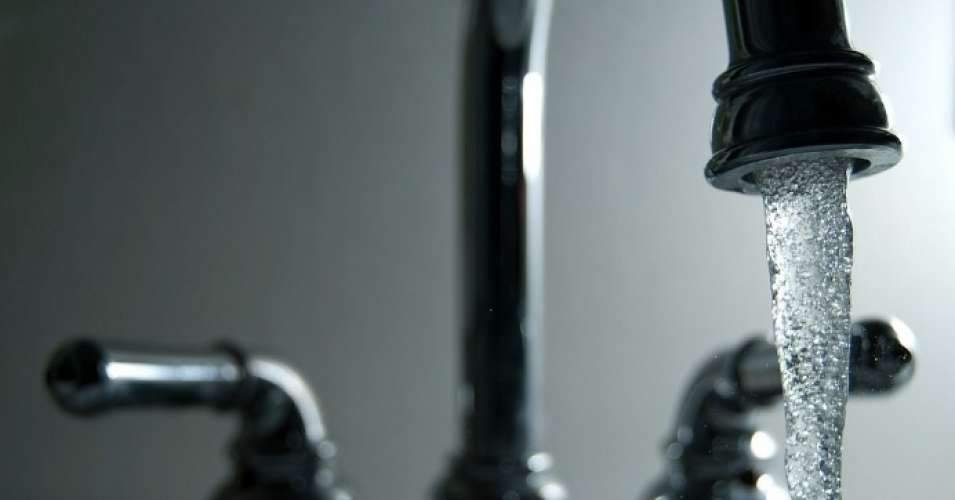Critics are challenging Trump’s “outrageous” and “alarming” move to renominate the former head of a Texas environmental agency who has admitted to falsifying reports of radiation levels in drinking water
By Jessica Corbett, staff writer for CommonDreams. Published 1-12-2018

A new investigation reveals that from 2010 to 2015, more than 170 million Americans—including about 25 million in California and 22 million in Texas—were drinking water contaminated with radioactive elements. (Photo: Steve Johnson/Flickr/cc)
A new five-year investigation revealing that more than 170 million Americans were drinking water contaminated with radioactive elements is also renewing concerns about President Donald Trump’s pick for a top environmental position in his administration—Kathleen Hartnett White, who ran Texas’ environmental agency while it was falsifying reports of radiation levels in tap water.
White chaired the Texas Commission on Environmental Quality (TCEQ) from 2003 to 2007, and admitted to local reporters in 2011 that the agency intentionally lowered the radiation level reported to the U.S. Environmental Protection Agency (EPA) because, “We did not believe the science of health effects justified EPA setting the standard where they did.”
She is now a fellow at Texas Public Policy Foundation—a conservative think tank that’s funded by the Koch Brothers and other major corporate donors—but if Trump gets his way, White will head the Council on Environmental Quality (CEQ), which is charged with making sure federal environmental agencies are following the law.
Environmental groups have vehemently opposed White’s nomination, with the Union of Concerned Scientists warning there’s “strong evidence” that she “favors private over personal interests,” noting that when White ran TCEQ, she “often put industry preferences ahead of public health—pushing for a lax ozone standard, approving pollution-intensive coal plants, and lowballing fines for companies that violate state laws.”
In December, the Senate Enivornment and Public Works Committee declined to approve her, and Sen. Tom Carper (D-Del.) released a statement explaining, “White’s concerning record, unacceptable statements, and shockingly poor performance before the EPW Committee last month have elicited serious concerns on both sides of the aisle and all across the country.” Despite the committee’s decision, the Trump administration resubmitted White’s nomination earlier this week.
“Putting someone in charge of CEQ who deliberately falsified data to get around federal regulations is outrageous, and the fact that her deception left people at serious risk of cancer is even more alarming,” said Scott Farber, vice president of government affairs for the Environmental Working Group (EWG), which conducted the nationwide investigation into radiation levels in drinking water.
For its study, EWG tested for radioactive elements in tap water across the country from 2010 to 2015, and found “radium, the most common radioactive element found in tap water” in “more than 22,000 utilities serving over 170 million people in all 50 states.” While California has the highest number of residents affected by radiation in tap water—about 25 million people, or 64 percent of the state’s population—the state with the most widespread contamination is Texas, where utilities serving 22 million people, or about 80 percent of the state’s population, reported radium in drinking water.
“Only a small percentage of those systems exceeded the EPA’s legal limits for radium, set in 1976,” EWG noted in a statement. “But almost all exceeded California state scientists’ public health goals for two separate radium isotopes, set in 2006, which are hundreds of times more stringent than the EPA’s standard for the two isotopes combined.”
“Most radioactive elements in tap water come from natural sources, but that doesn’t take away the need to protect people through stronger standards and better water treatment,” said Olga Naidenko, EWG’s senior science advisor for children’s environmental health. “Millions of Americans are drinking water with potentially harmful levels of radioactive elements, but the outdated federal standards mean many people don’t know about the risk they face when they turn on the tap.”
The EPA recognizes ionizing radiation as carcinogenic, as scientists have found evidence that exposure to high doses of radiation can cause various types of cancer, and the U.S. Centers for Disease Control notes that the human fetuses “are particularly sensitive to ionizing radiation, and the health consequences of exposure can be severe, even at radiation doses too low to immediately affect the mother. Such consequences can include growth retardation, malformations, impaired brain function, and cancer.”
Although most drinking water systems tested fell below the EPA threshold, EWG warns “the probability of developing cancer decreases with lower doses of radiation, but it does not go away.” The group has created an interactive map that enables users to review drinking water radiation levels by zip code.

